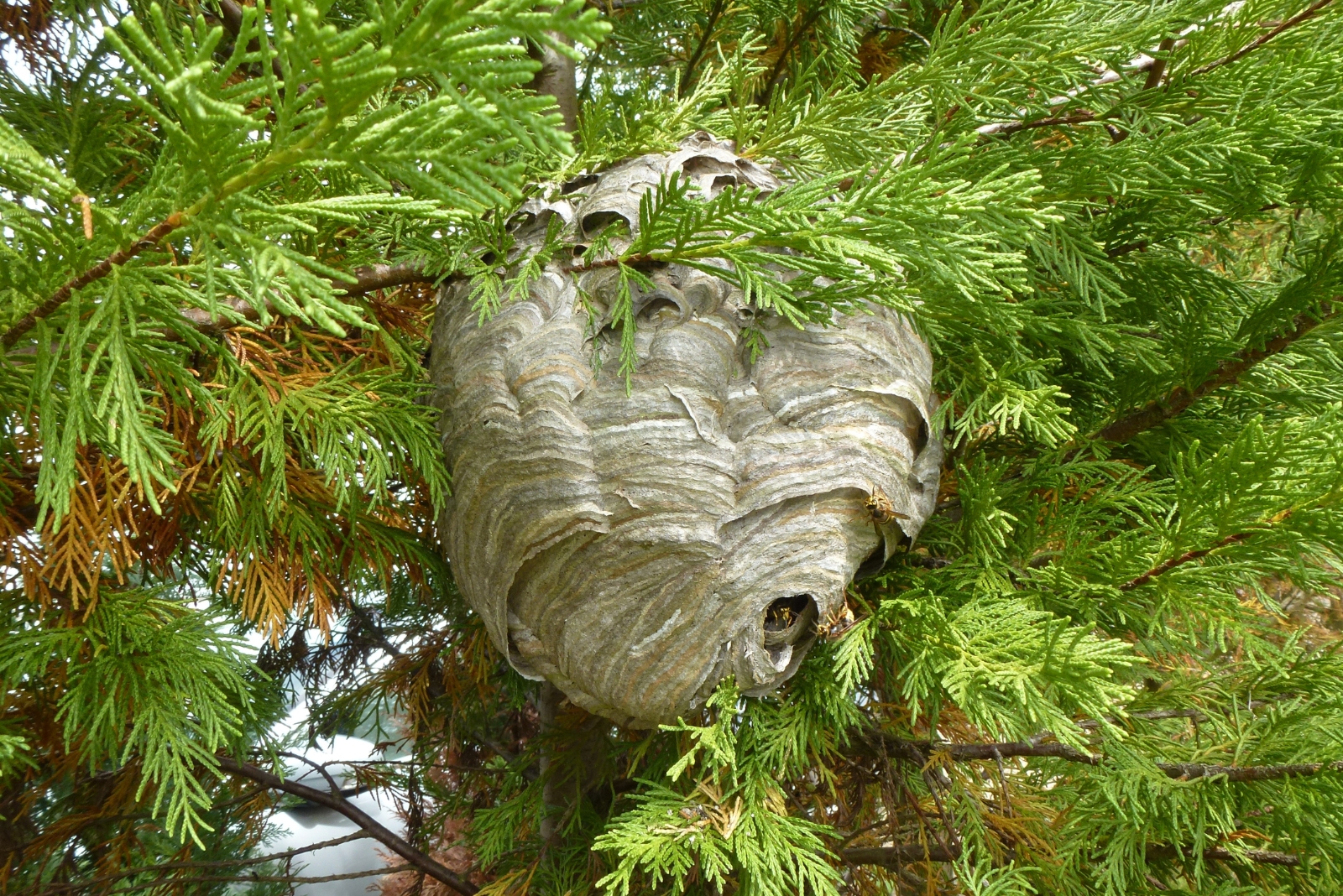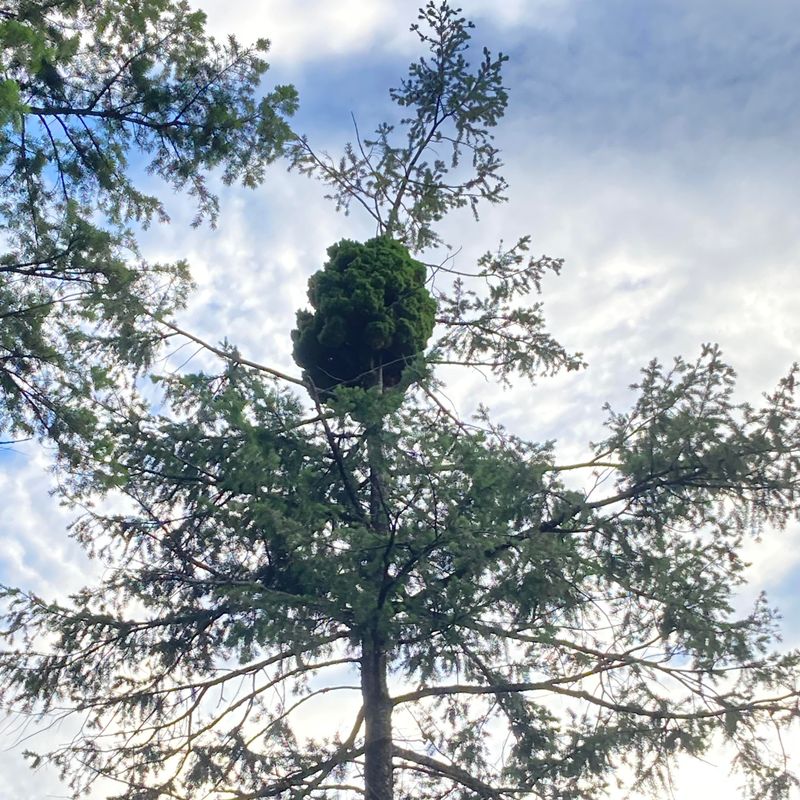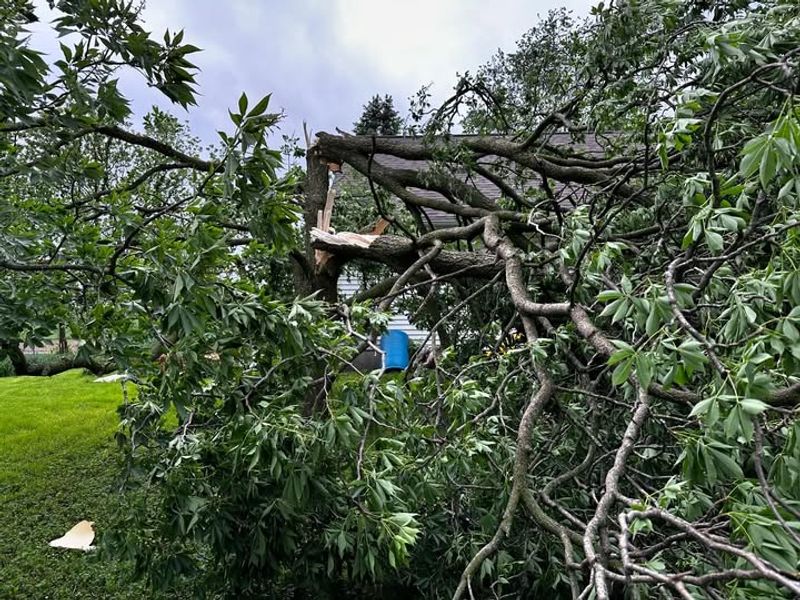When that giant leaf clump shows up in a Washington tree, it absolutely looks like a nest at first glance. I remember leaning out my window trying to spot a bird that wasn’t even there.
The truth behind it is way more interesting than anything I expected. Once you know the real cause, it becomes one of those things you can’t unsee.
1. Squirrel Dreys Are the Real Culprits
Squirrels build elaborate homes called dreys that look remarkably similar to oversized bird nests. Eastern gray squirrels common throughout Washington construct these leafy shelters high in tree branches for protection from weather and predators.
A drey typically measures about two feet wide and consists of tightly woven twigs, leaves, moss, and bark. Unlike bird nests, dreys have multiple entrance points and thick insulating walls perfect for surviving cold Pacific Northwest winters.
2. Witches’ Broom Disease Creates Dense Growth
Sometimes trees develop a bizarre condition called witches’ broom that causes abnormal branch growth forming tight, tangled clusters. This fungal or viral infection tricks the tree into producing hundreds of small shoots in one concentrated area.
Washington’s diverse tree species, including Douglas firs and cedars, can develop these strange formations that resemble massive nests. The dense twig bundles persist year-round, unlike temporary bird nests that eventually fall apart or get abandoned.
3. Mistletoe Clumps Mimic Nest Shapes
Mistletoe is a parasitic plant that grows on tree branches and forms bushy, rounded clumps visible from far away. Throughout Washington forests, dwarf mistletoe particularly affects conifer trees, creating dense green balls that people often mistake for animal homes.
During winter when deciduous trees lose their leaves, mistletoe clusters become even more prominent and nest-like. The plant steals water and nutrients from host trees while maintaining its distinctive spherical shape year after year.
4. Abandoned Wasp Nests Fool Many Observers
Bald-faced hornets construct large paper nests that can reach basketball size by late summer across Washington neighborhoods. These gray, papery structures hang from tree branches and look surprisingly similar to messy leaf bundles from a distance.
Once abandoned in fall, these nests weather into brown, ragged balls that persist through winter. Homeowners frequently confuse these architectural marvels for bird nests, especially when partially covered by leaves or vines clinging to the structure.
5. Leaf Clusters From Storm Damage
Strong winds and storms common in Washington can break branches that lodge into tree forks, collecting leaves and debris over time. These accidental accumulations grow larger as more organic material gets trapped, eventually resembling intentionally built structures.
Pacific Northwest storms frequently deposit branches in awkward positions where they snag falling leaves each autumn. What starts as a small tangle can balloon into a convincing nest-like formation that persists for months or even years.
6. Bushy Dwarf Mistletoe Infections
Dwarf mistletoe creates particularly dense infections on ponderosa pine and Douglas fir trees common across eastern Washington. Unlike regular mistletoe, this species causes extremely compact branch deformities that look like massive, tangled bird nests from ground level.
Forest managers consider dwarf mistletoe a serious problem because infected branches form broom-like masses that weaken trees. These persistent growths remain attached for decades, fooling countless hikers and homeowners into thinking they’ve discovered enormous nests.
7. Galls Caused by Insects or Mites
Certain insects and mites trigger trees to form abnormal growths called galls that sometimes cluster together into ball-shaped masses. Oak trees throughout western Washington commonly develop these peculiar formations when tiny wasps lay eggs in branches, causing unusual tissue growth.
Gall clusters can reach impressive sizes, creating rounded lumps that people frequently mistake for constructed nests. Unlike actual bird homes, galls are solid growths that remain firmly attached to branches and never contain hollow nesting cavities inside.








